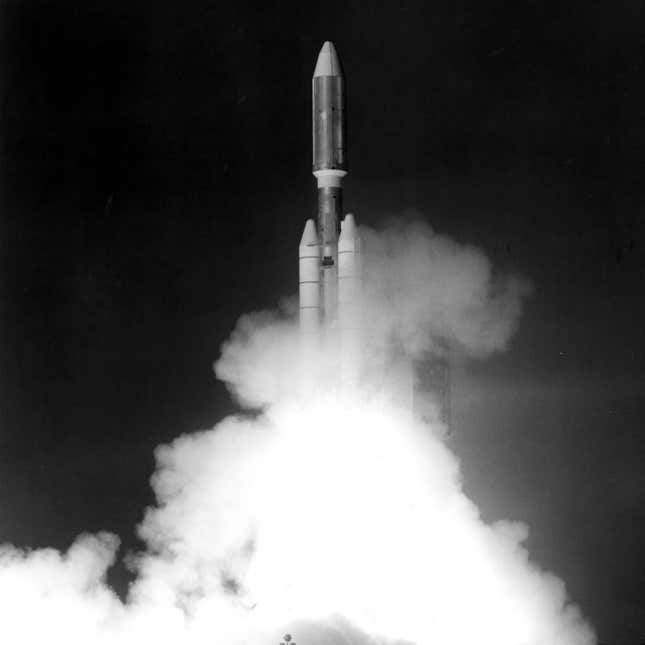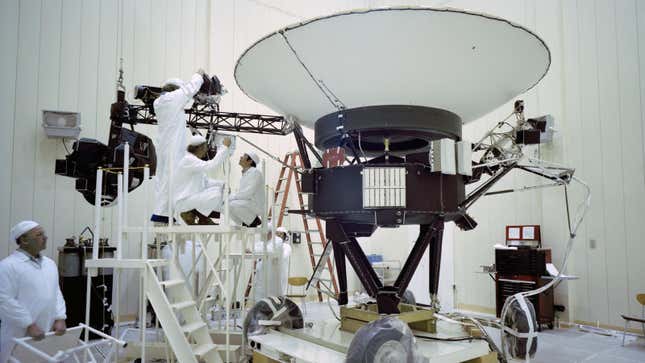After launching into area virtually 50 years in the past, NASA’s Voyager probes are reaching the tip of their lives. The nuclear batteries onboard the 2 spacecraft are operating out of juice, which implies NASA is counting down the times till the dying of Voyager 1 and Voyager 2 by slowly shutting off techniques one after the other.
NASA launched Voyager 1 and Voyager 2 again in 1977 and since then the 2 craft have traveled additional into area than anything artificial. Virtually 50 years spent touring the cosmos has taken its toll on the 2 probes and Wired resorts that NASA is now making ready for the tip.
When NASA launched the 2 craft into area, they had been fitted with nuclear batteries that would generate energy via decaying Plutonium-238 isotopes. Warmth launched by the decaying radioactive materials is transformed into power to energy the onboard techniques, however Wired reviews that this energy is now operating low:
However as time passes, the plutonium on board is depleted, and so the [radioisotope thermoelectric generators] produce much less and fewer power. The Voyagers are subsequently slowly dying. Nuclear batteries have a most lifespan of 60 years.
With a purpose to preserve the probes’ remaining power, the mission crew is progressively shutting down the varied devices on the probes which can be nonetheless energetic. For instance, in October, Voyager 2’s plasma science instrument—which measures electrically charged atoms passing the probe—was turned off; the identical gadget on Voyager 1 was turned off in 2007 because of a malfunction. These devices had been used to check charged particles within the solar’s magnetic discipline, and it’s exactly this detector in 2018 that decided that Voyager 2 had exited the heliosphere and develop into interstellar.

The diminished energy onboard signifies that NASA has needed to make some tough choices on the subject of what sensors and devices are nonetheless operating on the 2 Voyager probes. After overlaying round 15 billion miles, simply 4 devices stay energetic onboard, together with a magnetometer and different equipment that may examine the galactic surroundings.
Fortunately communications between Earth and the 2 probes are nonetheless up and operating after NASA regained contact with Voyager 1 final month. Voyager 2 has additionally confronted comms problems with its personal that NASA needed to work via final yr, provides Futurism.
Now, the groups behind the 2 craft are concentrating on the fiftieth anniversary of Voyager 1 and Voyager 2 in 2027. Groups are hopeful that the 2 probes will final that lengthy, and something further is a pleasant bonus, as Futurism reviews:
Nonetheless, the crew continues to be appreciative of a groundbreaking, decades-long mission that’s even managed to flee the heliopause, the outer boundary of the Solar’s heliosphere.
“I believe we’re all joyful and relieved that the Voyager probes have each operated lengthy sufficient to make it previous this milestone,” stated Voyager challenge supervisor Suzanne Dodd in a November assertion. “That is what we’ve all been ready for. Now we’re trying ahead to what we’ll be capable to be taught from having each probes outdoors the heliopause.”

As soon as energy goes out, the 2 craft will proceed on their present trajectory till they hit one thing, which implies there’s simply no understanding fairly how far the famed gold disc strapped to every probe will make it into the cosmos.


